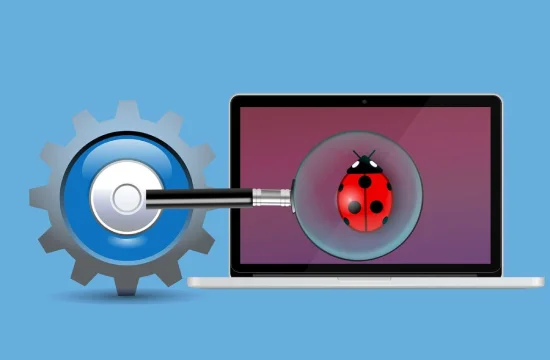What is a Process Hacker in Cybersecurity?
In cybersecurity, a process hacker refers to a tool, technique, or threat actor that manipulates legitimate operating system processes to gain unauthorized control, evade detection, or execute malicious code. Unlike traditional malware that operates as standalone files, process hacking relies on exploiting trusted system resources, making it significantly harder to identify and stop.
Cyber attackers use process hacking to:
- Inject malicious code into legitimate processes.
- Hijack running processes to escalate privileges.
- Bypass antivirus and endpoint detection by masquerading as safe applications.
- Maintain stealthy persistence in a compromised system.
- Process hacking is especially dangerous in environments where detection relies solely on signature-based solutions or outdated behavioral heuristics.
Process Hacking Techniques Explained
The term process hacking techniques encompasses a wide variety of methods attackers use to manipulate or abuse system processes. Some of the most common include:
- DLL Injection
Malicious dynamic-link libraries (DLLs) are inserted into legitimate processes, allowing attackers to execute code with the same permissions as trusted applications. - Process Hollowing
A legitimate process is started in a suspended state, its code is replaced with malicious code, and then it's resumed—making it appear safe to traditional monitoring tools. - Thread Execution Hijacking
Attackers hijack the thread of a running process to execute arbitrary code, often in a stealthy, in-memory manner. - APC Injection (Asynchronous Procedure Call)
Malicious code is inserted into the queue of a target process, causing it to execute during legitimate application flow. - Parent Process Spoofing
The malware creates or spoofs a trusted parent-child process relationship to avoid suspicion from security analysts and automated tools.
These process manipulation hacking techniques can be chained together and dynamically modified during an attack campaign, making static detection nearly impossible.
Windows Process Hacker Threats
Windows is a prime target for process hacking due to its widespread use and the richness of its API for process control and memory management. Attackers often use or mimic legitimate admin tools such as:
- Process Hacker (open-source monitoring tool)
- Process Explorer
- Task Manager
- PowerShell-based scripts
Cybercriminals can exploit these tools or hide behind their processes to carry out malicious actions. For instance, malware can use svchost.exe or explorer.exe to blend into normal activity, evading even advanced EDR solutions.
Xcitium’s patented ZeroDwell technology ensures that even if an attacker abuses a legitimate Windows process, the malicious behavior is instantly isolated, preventing system compromise.
Linux Process Hacking Tactics
Linux systems are not immune to process manipulation hacking. In fact, advanced threat actors—particularly APTs—frequently target Linux-based servers and containers due to their role in cloud infrastructure.
Linux process hacking often involves:
- LD_PRELOAD hijacking
- ptrace-based injection
- Shared memory abuse
- Daemon spoofing
- Credential scraping via procfs
Because Linux allows fine-grained process control and often lacks centralized security controls, attackers can execute and hide malicious processes with relative ease.
Xcitium’s multi-platform endpoint protection identifies and contains process anomalies on Linux environments, closing a major blind spot in modern IT infrastructures.
Why Process Manipulation Hacking Is So Effective
Process manipulation hacking is effective because it exploits core OS behavior:
- It uses trusted binaries: making it difficult to distinguish good from bad.
- It operates in memory: evading disk-based detection tools.
- It blends with user activity: reducing alert accuracy.
- It exploits system calls and APIs: staying beneath the surface of typical security scans.
Traditional antivirus and even next-gen EDRs often miss these attacks because they focus on file-based threats or predefined threat signatures.
Xcitium’s Approach to Stopping Process Hackers
Xcitium neutralizes process hackers through a radically different model: Default Deny + ZeroDwell Technology.
Here’s how we stop process-based threats in real time:
- Unknown processes are contained by default
If a process hasn’t been verified as 100% safe, it runs in an isolated container with zero access to critical system resources. - Behavior is monitored in a virtualized layer
Malicious activity—like DLL injection, thread hijacking, or API abuse—is detected inside the container without putting the real OS at risk. - Zero delay, zero impact
End-users experience no slowdown or alerts unless the process is proven malicious. This avoids alert fatigue and maintains productivity. - Cross-platform protection
Whether the endpoint runs Windows, Linux, or a hybrid cloud environment, Xcitium protects against process manipulation hacking at the kernel and user levels.
Real-World Case Study: Containing a Process Hacker Attack
In a recent deployment at a multinational law firm, Xcitium identified an advanced attack where malware hijacked the winlogon.exe process to inject ransomware code.
- Traditional EDR flagged nothing.
- Antivirus showed the system as clean.
- Xcitium contained the process immediately upon execution, blocking lateral movement.
- Forensic analysis revealed that the attacker used DLL side-loading combined with process hollowing.
Had Xcitium not been in place, the firm would have lost terabytes of confidential data and faced regulatory fines.
Why Organizations Need Proactive Process Monitoring
Process hackers don’t knock on the front door—they slip through the side window. That’s why enterprises need:
- Behavior-based containment that doesn't rely on detection
- Isolation of unknowns before they touch the OS
- Visibility into process behavior, not just filenames or hashes
- Forensics to analyze attacks and ensure compliance
Xcitium delivers all of this out of the box—without requiring expensive consultants or complex setup.






